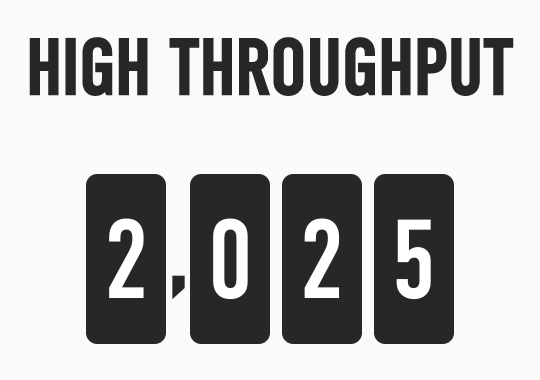The number of cryptocurrencies trading in the market is growing non-stop. In fact, at the time of writing (January 31, 2022), over 17, 200 digital coins are listed on CoinMarketCap. What makes it more interesting is that thousands of these cryptos were built on the Ethereum blockchain.
One of the many coins that has recently introduced itself in the crypto space is Loopring (LRC). This coin may be relatively new, but it has already gained popularity among many crypto enthusiasts and investors. How is that even possible? Let’s find out.
A deep dive into Loopring
Loopring is a protocol or program built on top of the Ethereum blockchain or the main chain, also called Layer 1. Simply put, Loopring is a Layer 2 network protocol designed to improve the base network, or, Layer 1. These upgrades include enhancing user experience by making transaction processes even faster and cheaper.
You can think of Layer 2 networks like Loopring as another exit door you can take, so you won’t have to worry about people shoving one another in their fight to hurry out of the movie theater door. Loopring is built on top of the Ethereum network to help ease transaction congestion.
As per the developers of Loopring, its development helps the protocol reach throughput—the rate of how fast a blockchain processes transactions—approximately a thousand times faster than Ethereum. They also claim that Loopring can reach a peak of over 2,000 transactions per second (TPS).
Because the transactions on Loopring take a different route, they’re way faster and cheaper than those on Ethereum’s main chain. What makes it even more interesting is its native utility token, also known as Loopring, with the ticker LRC.
What is LRC?
LRC is the Loopring network’s Ethereum-based cryptocurrency introduced in 2017. It’s also known as the driver of Loopring’s decentralized exchange (DEX), launched in February 2020. This cryptocurrency also experiences sudden rises and falls in price, just like other coins in the market and has a total supply of 1,375,076,040 LRC.
In October 2021, LRC got ahead of other coins with a growing value. Not long after, in November of the same year, LRC crypto reached its all-time high (ATH) of over 3.80 USD per token. On the flip side, as we’ve mentioned earlier, LRC is also a volatile currency. At the time of writing, LRC is selling at a little over 0.9000 USD per coin.
Apart from being one of the newest protocols in the crypto space and its digital coin’s growing popularity, LRC has other features you need to know of. One of which is the ZK-rollup, also known as Loopring’s prime mover.
Loopring on making Ethereum transactions faster and cheaper
According to its website, Loopring’s fundamental points include secure, high throughput, and low-cost transactions. Let’s quickly go over each of these features:
- Secure processes – Loopring, as per its website, is an “open-sourced, audited, and non-custodial exchange and payment protocol.” In its ecosystem, no one needs to trust one another. With Loopring, the ZK-rollups are the ones to make sure that the assets are always under users’ control.
- High throughput rate – Loopring processes payments and transactions off-chain by a batch of thousands of requests. Doing so improves the transaction processing speed and eliminates the performance bottleneck in the Ethereum main chain.

Source: loopring.org
- Lower costs – Since most trade and transfer settlements happen outside of the Ethereum Layer 1 network, the gas consumption and overall transaction costs are reduced.
Now that we’ve learned about Loopring’s notable features, let’s dig a little deeper into the powerful force that drives it called the ZK-rollup.
ZK-rollup: The driving force behind Loopring
The zero-knowledge (ZK) rollup or zero-knowledge proofs is the method of processing transactions privately. It works by proving something is true without providing much information about the transaction.
It’s like telling a security guard at the casino that you’re of legal age and they let you in without having to show your ID or any proof. You can also think of it as getting in on a flight even when you didn’t present your ticket to the flight attendant.
Zero-knowledge rollups are crucial for protocols in the crypto space that don’t want to disclose much information to third parties or a central point of authority in case something goes wrong. Simply put, this avoids leaking or giving away unnecessary information.
Now, you might be wondering how ZK-rollups work. As its name suggests, ZK-rollups “rolls” the batches of transactions collected into a single transaction and execute them on the main chain like the Layer 1 Ethereum network. Doing so significantly cuts costs and speeds up processing time since multiple transactions can be completed at once.
More developments await
From what we’ve learned so far, we’ve discovered that Loopring can “build protocols, infrastructure, and user-facing products for the future of finance.” It can provide robust security and reliable performance, creating a high-speed platform for swapping, payments, trading, and liquidity possible without sacrificing the safety of the network and its users.
This cryptographically-sound Ethereum protocol is also another good option if you’re looking to spend less time, money, and other resources on safety and compliance, and more on evolving your business and similar undertakings.
There’s more to explore about Loopring, so make sure you do your research to understand the ins and outs of the protocol and its cryptocurrency.